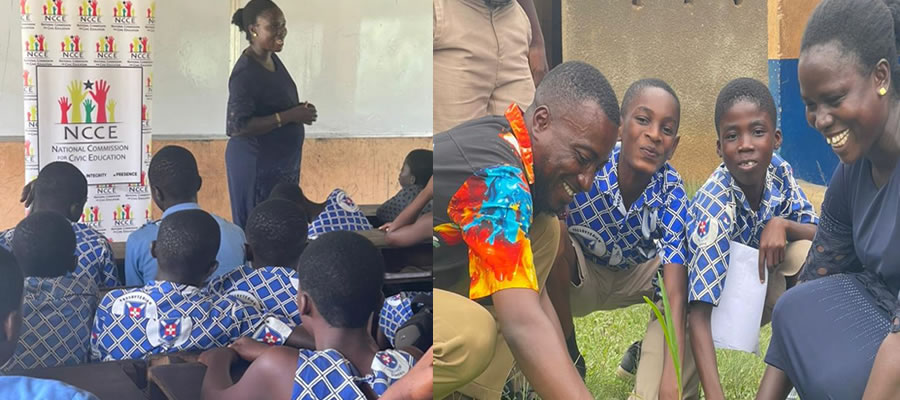

Population Size and Growth Rates
The population of the district was estimated to be about 179,209 in 2000. It is however estimated to be 196,992 in 2005 projecting it by using 1.9% inter-censal growth rate.
The high district population growth of 1.9% relative to the regional rate of 1.4% was as a result of both natural increase and the influx of migrants into the district to seek greener pastures in flourishing sectors such as mining and agriculture.
Population Density
The district covers an estimated area of 1230 square kilometers, which represents 6.4% of the total regional land area. This puts the 2005 population density figure at 160 persons per square kilometer. The regional population density is estimated to be 109 persons per square kilometer. The high district population density will exert pressure on the resources of the district.
Age-Sex Distribution
The district’s male and female populations are estimated at 100,415 and 96,577 respectively. This translates into a female: male ratio of 100:104.4 implying the presence of more males trends, it is not unexpected of a district like Kwaebibirem, which has abundant potentials in mining (gold and diamond) and agriculture (oil palm and citrus) which attract a lot of migrants who are mostly males.
According to the age/sex distribution, about 42.6% of the population is aged between 0-14, about 51.9% between 15-64 and about5.5% above age 64. This fairly youthful population with a modal age around 10 years, within an environment of scarce financial resources has far reaching consequences on education, health and the labour market.
Settlement Patterns
In the Kwaebibirem District, with the exception of Akwatia, Kade, Asuom, Boadua, Abaam and Takrowase, which are urban, the rest of the settlements are rural with very small communities. However, there is a very strong economic, social and political interaction between the smaller settlements and the urban centers.
These settlements are separated from each other by a distance of between 2-8km and mostly spread along the main trunk roads within the district and from the district capital by an average distance of 25km. The remaining smaller settlements are scattered all over the district, with their nucleus consisting of a primary school and an "odikro’s" house. Most settlements are nucleated with a few dispersed ones.
A centrally index was calculated from the scalogram for all the settlements in the district to give an indication of the distribution of the services in the district. Kade and Akwatia had a centrality index of 392.9 and 360.3 respectively and the next largest settlement (Asuom) had a centrality index of 264.6.
Migration
According to the Ghana Living Standards Survey Report on the third round (GLSS3) by the Ghana Statistical Service, migration flows into the Eastern Region is 62.5% while 37.5% of the population are non-migrants. Analysis of the baseline survey reveals that, out of 332 respondents, 36.7% had some members of their households residing outside the district for various reasons, notably to seek employment (35.2%), marriage (12.3%), visits (18.8%) education (20.5%) and others (13.1%).
The analysis further indicated that 65.3% of the migrants were males. About 6% of the migrants were aged between 10 and 15 years, 12.2% between 16 and 20 years and 81.7% above 20 years.
Further revelations of the analysis indicated that about 28.6% of the migrants had primary education, 26.5% had J.S.S./Middle school education, 34.5% had S.S.S./Voc./Tech. Education and 10.2% had tertiary education. Table 1.7 shows the level of education of the migrants.
Date Created : 11/24/2017 6:18:27 AM












 facebook
facebook
 twitter
twitter
 Youtube
Youtube
 +233 593 831 280
+233 593 831 280 0800 430 430
0800 430 430 GPS: GE-231-4383
GPS: GE-231-4383 info@ghanadistricts.com
info@ghanadistricts.com Box GP1044, Accra, Ghana
Box GP1044, Accra, Ghana